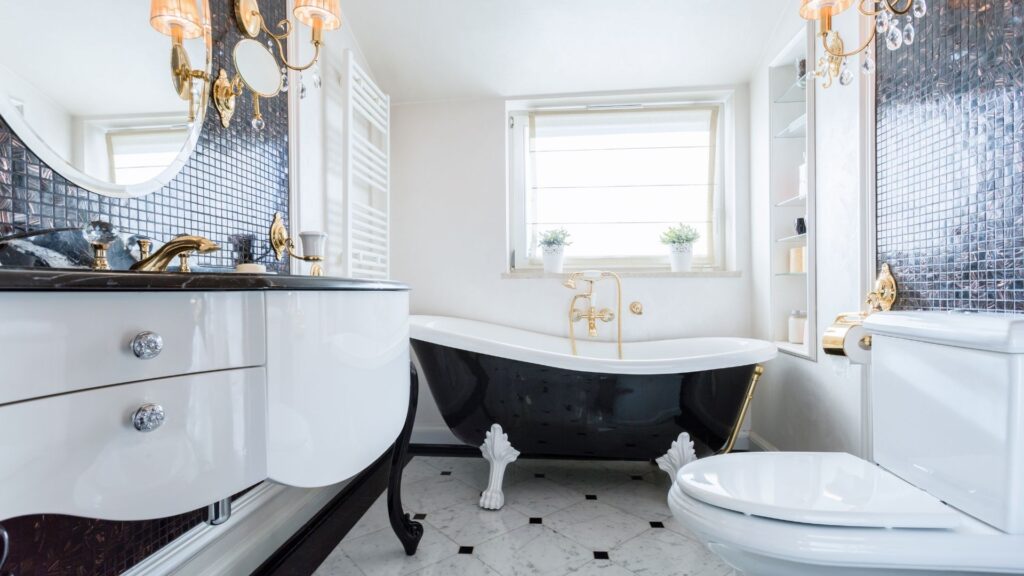
Feel the Pride of Being the Owner of Something Beautiful
The human eye grows weary after gazing upon the same old sight day after day. Maybe you’ve been considering a total home makeover, and you’ve decided to begin with the bathroom so that you can finally achieve the relaxing oasis you’ve always dreamed of.
The ambience of one’s bathroom is challenging to completely transform. However, if you want to give your bathroom a facelift, swapping out the tiles is a simple but effective way to do so.
For those who have never tackled a tiling project before, the sheer number of options may be overwhelming. Tile materials available in the market include ceramic and porcelain, but there are many other options available, such as glass tile, cement tile, metal tile, and stone tile. Even more so, not all tiles are suitable for all applications, and there’s also the matter of your spending plan.
It’s normal to feel some level of anxiety, so we speed things up by doing all the legwork for you. Read the article to learn what Sirwiss-affiliated floor and tile laying experts recommend for your upcoming project.
Tiling in the Bathroom
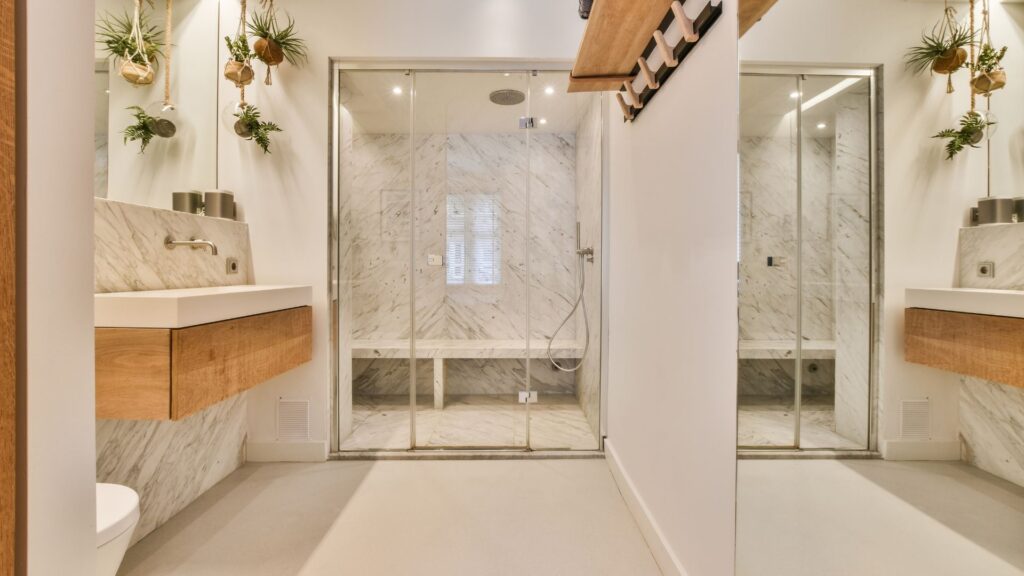
At the end of a long day, we retreat to the privacy of our own bathrooms, creating a place of refuge of peace and quiet where we can unwind and forget our cares and concerns. Designs that mimic natural elements, such as wood or stone, are increasingly popular in the bathroom. It’s important to remember that not all tiles come with a nonslip surface if you plan on tiling the bathroom floor.
Order a small sample of the tile you’re interested in to make sure it meets your needs before making a larger purchase.
There are Innumerable Advantages
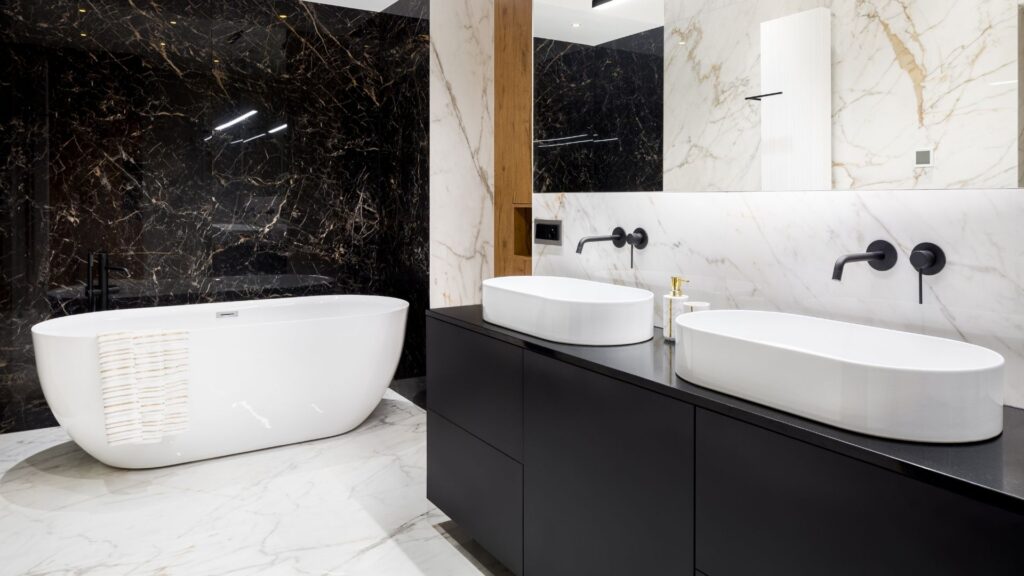
When considering how to update your bathroom, you can choose from a variety of wall colors, update the hardware or appliances, and install a new vanity, among many other options. If you wish to alter the appearance of the walls, you may want to consider tiling them. Adding tiles to the walls of your bathroom gives it a timeless, fashionable look that is unlikely to go out of style. It is resistant to bathroom moisture and will not tear or deteriorate. It is easy to clean and does not retain odors like other materials.
1. Surfaces Made for Safety
Everything in your bathroom is going to get wet, from splashes to full-on showers. If you’re looking for non-slip bathroom flooring, ceramic tile has a wide range of options to choose from. Tile’s adaptability allows for attractive customization to meet a variety of needs, such as those associated with the installation of a wheelchair ramp or a walk-in shower.
2. Resistance to Water
The bathroom fixtures and fittings you choose must be waterproof. Ceramic tile floors and walls are watertight when installed the right way with the right materials. Other building products may boast of being waterproof, but without waterproof installation methods or mechanisms to achieve a waterproof assembly, any residual moisture will cause serious damage to your building. You can rest assured that your lovely new bathroom is also highly functional and long-lasting because every tile can be used to cover the floor, walls, and ceiling.
3. Easy Maintenance
Tiles are not only created and designed to withstand the heaviest traffic, but they are also maintenance-free. Tiles retain their beauty for an extended period of time with only minimal care. To clean floor tiles, mopping, washing, or spraying them with your preferred tile cleaner is sufficient to restore their pristine appearance. Using household cleaners or natural substances such as white vinegar or baking soda, stains such as grease can be easily removed from floors.
4. Durability
When dropped from a standard height, a single tile has the strength to withstand a force of 132.6 kilograms before breaking. For example, porcelain tiles are made from high-quality raw materials and specialized production techniques to ensure durability. These tiles are pressed at a high temperature of approximately over 1200 degrees Celsius while being extremely compact, dry, or dusty. A well-maintained tile floor can last for decades if it has been laid correctly and regularly cleaned.
5. Resistance to Mold and Mildew
Maintaining a healthy bathroom environment is essential for the health of your loved ones. This area, which is optimized for our personal health and hygiene, should be as clean and sanitary as possible. The greatest concern for areas that are frequently exposed to high levels of moisture, such as bathrooms, is the development of bacteria. Tile surfaces inhibit the growth of bacteria and mold and mildew. In addition to being resistant to bacteria, ceramic tile offers options that are antimicrobial and can suppress and even eradicate mold, fungi, bacteria, and viruses.
5. Fire Resistant
While making ceramic tiles, temperatures reached well over a thousand degrees Celsius in the kiln. In most cases, the surface of the tiles will not be scorched or melted. There is no need to apply fire rating requirements to tiles under most national building codes because tiles are naturally fire resistant. Therefore, tiling your floors and walls will make your home a more secure place to live for your family.
6. Choose from a Variety of Designs
The versatility of tile allows it to be installed on all bathroom surfaces, including the floor, wall, backsplash, shower floor, insets, and surround. This versatility enables you to choose from a of coordinating tile options for a consistent look, or to mix things up by combining designs that complement one another. Add to the mix the sequence in which your tile is hand-laid and the color of grout you select, then resynchronize with faucets, shower doors, and towel racks to create a one-of-a-kind design.
The infinite combinations of tile color, shape, and pattern make your options truly limitless. Create a tranquil space where you can escape with opulent accents or a vibrant, functional space; regardless of your changing design vision, your tiles will withstand constant use beautifully.
Different Types of Tiles
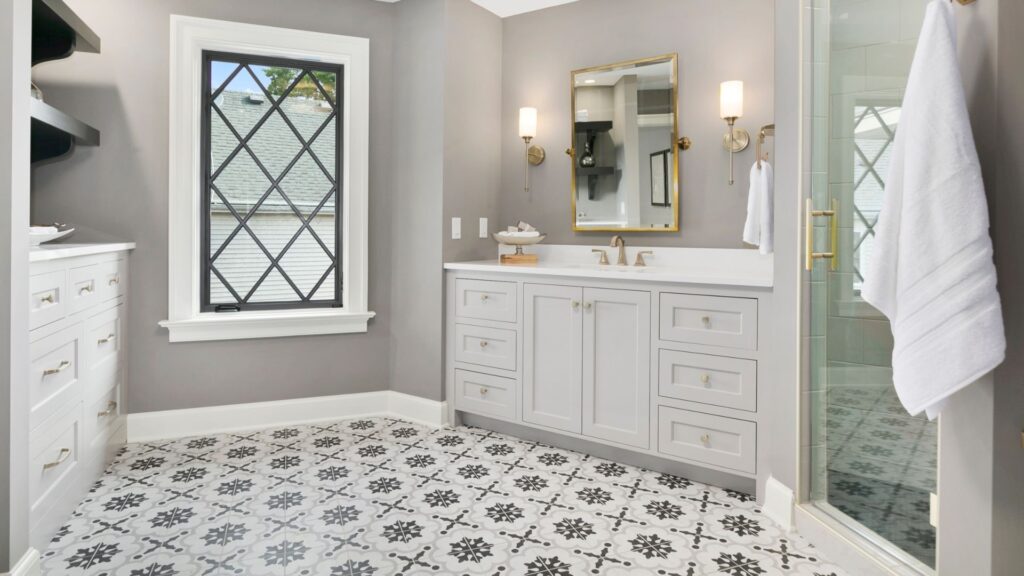
Ceramic and porcelain tiles are the two most popular options. The question is, though, what distinguishes them. Both are formed from clay and baked in an oven. Porcelain, on the other hand, is made from clay that is more highly refined and processed, and then fired under greater pressure and at a higher temperature than ceramic. As you live in a country like the United Arab Emirates, where long summers are common, and you plan to tile an outdoor area, you should use ceramic rather than porcelain because it is resistant to temperatures.
1. Ceramic Tiles: Made from a mixture of water, clay, and minerals, ceramic tiles are fired in a kiln to harden their ceramic material. While these tiles come in a wide range of colors and designs, they are porous and easily broken if not glazed. Bathroom walls and floors often feature ceramic tiles due to their durability, ease of cleaning, and resistance to moisture. The floor can now be kept comfortably cool in the summer and warm in the winter thanks to these tiles.
2. Porcelain Tiles: Despite their similarities to ceramic tiles, the high density of porcelain makes it last much longer and resist wear and tear. In addition, the higher temperatures used to create porcelain give it greater durability and scratch resistance compared to ceramic. The increased water resistance and lower porosity of porcelain make it a common bathroom material. You won’t have any trouble finding the ideal design for your bathroom with these tiles, as they are extremely adaptable.
Besides these most commonly used tiles, you can also use other alternate tiles, such as:
3. Terracotta Tiles: With terracotta tiles, the bathroom takes on a charmingly rustic air. They are perfect for vintage or country style bathrooms due to their red or earthy clay construction. These tiles are commonly found in Mediterranean-style homes due to their aesthetic beauty and earthiness, and they are typically made from red clay. If you want to keep your tiles in pristine condition for as long as possible, you should seal them every two years.
4. Limestone Tiles: Tiles fashioned from limestone are made from a natural material called calcium carbonate salt. Thanks to their wide range of colors and designs, they complement any bathroom decor. Limestone is widely used because of its aesthetically pleasing appearance in contemporary washrooms. This is because limestone gives a bathroom floor a natural, cozy feel. When sealed properly, limestone will last for decades. Moreover, due to their weight, limestone tiles are best left to the experts for installation.
5. Granite Tiles: Although its low porous property may lead you to believe otherwise, granite is just as popular for bathroom countertops as it is for kitchen ones. When comparing different types of natural stone tiles, granite’s exceptional durability stands out. Even better, it can withstand normal wear and tear for a long time without showing signs of damage.
6. Mosaic Tiles: Glass, tile, or stone are just some of the many possible materials for mosaic tiling. These tiles stand out because of their delicate size and delicate yet durable patterns. Mosaic tiles are built to resist water damage and can last for decades. The addition of these fixtures to contemporary washrooms is a stroke of genius.
7. Marble Tiles: The beauty of marble tile is undeniable. Because of the many different hues and design features available, no two marble tiles will ever be exactly the same. Marble tiles come in a wide variety of textures as well, making it easy to find ones that complement your bathroom’s design scheme. Marble flooring is great because it can withstand moisture and is resistant to stains. Tiles of this style are ideal for luxurious washrooms.
Bathrooms Can Be Tiled in a Variety of Ways
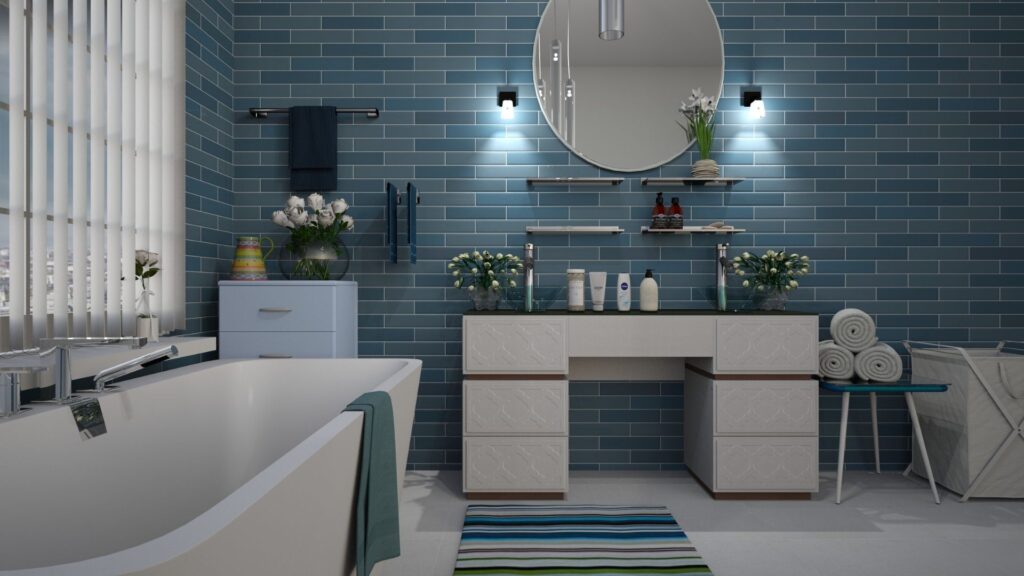
Whether designing a powder room or master bathroom, finding inspiration is often the most difficult aspect. Check out these bathroom tile ideas to begin designing your fantasy bathroom.
1. Tiling the Accent Wall
The bathroom accent wall is the perfect place to try out some daring tile designs that you might be afraid to use elsewhere in the house. The most challenging part of installing a feature wall is determining its optimal placement. The wall in your bathroom that is at the opposite end from the door is perfect for this. It is commonly believed that an accent wall must stand out strikingly from the rest of the room’s design. However, a low-key accent wall can make just as much of an impression. When planning out the layout of your accent tile wall, don’t restrict yourself to color alone. Add visual interest by incorporating textured patterns that stand out against the plain walls.
2. Dark Wall Tiles for Your Bathroom
Newbie decorators often avoid using dark colored tile for fear of making their spaces look too dreary. Unfortunately, if you don’t know what you’re doing, these shades can really shrink an already cramped bathroom. However, if you choose your bathroom tile meticulously, you can add the illusion of depth with a dark color. You can remodel your bathroom without being afraid to use dark colors. A bathroom with some of its surfaces covered in dark shades of blue, gray, or even black will reflect the light colors more effectively. What kind of grout you use in your bathroom can make or break the colors you choose. The black tiles really pop against the white grout. The alternative, matte black grout, is just as stunning. You can always go with patterned tiles if you’re still nervous about installing dark ones in your bathroom. Using penny tile in a range of charcoal tones is a simple yet effective way to tap into this movement.
3. Textured Tile Ideas for the Bathroom
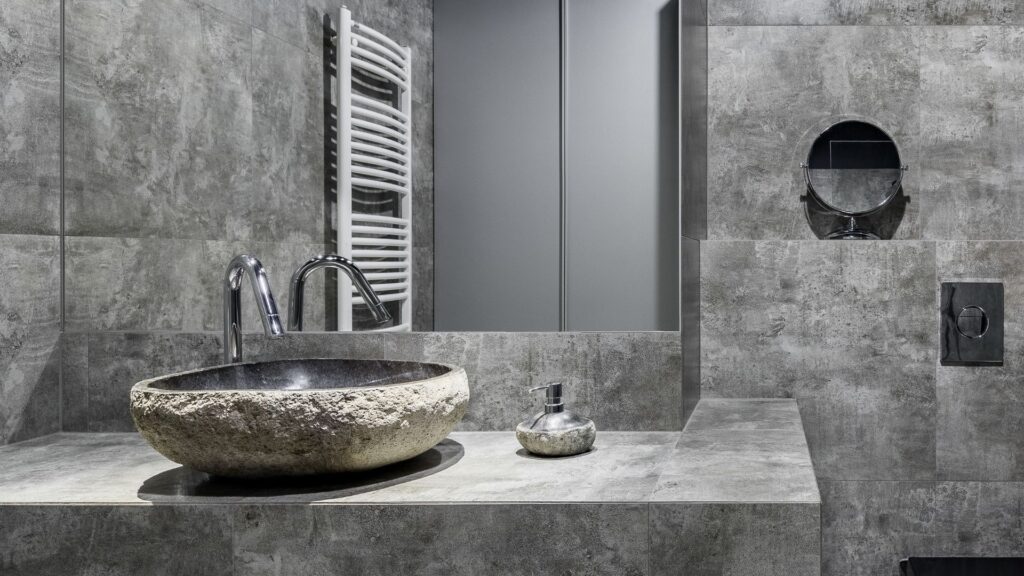
Every tile and the grout between them add a subtle texture to a tiled surface. Tiles with a variety of textures, however, are all the rage in modern bathrooms. While textured tiles aren’t practical for use on floors, they can give a flat wall in the bathroom a sense of depth and dimension. You should use a limited color palette if you want to use textured tiles in a bathroom design. If you add a pattern to the textured tiles, it will be too much (and defeat the point of using textured tiles in the first place). That’s why you should use textured tiles even if your overall design is monochromatic.
4. An Ivory Bathroom for You
White ceramic tiles are a great option for a small bathroom. This color scheme is not only aesthetically pleasing, but also functional, as it will help the room appear larger. When it comes to white natural stone, subtle color variations are common. However, these naturalistic designs really come to life when used as bathroom floor tiles or an entire wall of backsplash. Hexagonal tiles are a great choice for a modern look. This design is versatile and can be applied in a variety of settings. So long as you use grout that is the same color as your tiles, the distinctive design will be hardly noticeable. Put in tiles of any size you think looks good there. A popular way to implement this style is to not trim the tiles’ natural geometric edge.
In a bathroom with other dark fixtures and fittings, white tile and grout really pop. Adding even a little bit of white tile to your bathroom’s walls or floor will help to create more visual interest and make the room feel less confining.
5. A Natural Stoned Bathroom
The unique feel of natural stone is one of its most attractive qualities. While polished stone tiles are available for the bathroom floor (no one likes to walk barefoot across rough rock), the natural beauty of this material is best displayed when it is not altered in any way. To create the look of brickwork, tile floors and walls with uniform stone tiles. Or slap together some rough stones to make it look like a cliff face.
If you want your shower floor or walls to look like they were made of river rock, installing pebble tile is a simple way to do so. Using these patterns in a shower enclosure is a surefire way to make that room look amazing. Installing stone tile on the walls and a waterfall shower head will make your next shower feel like a relaxing dip in the great outdoors.
Due to its inherent uniqueness, stone tile is best utilized as a focal point in a room or as a backsplash. Installing natural stone on all of your bathroom’s walls will likely make the room feel claustrophobic.